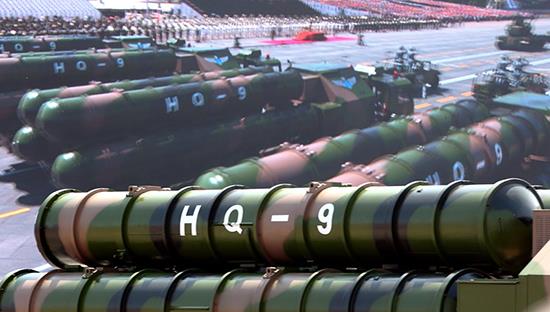(MENAFN- Asia Times)
In a bid to reinforce its weak defenses in the South China Sea, the Philippines has issued a notice of award to India to acquire the Brahmos supersonic cruise missile in an approximate US$375 million deal.
The procurement aims to provide the Philippines with three missile batteries and bolster India's push to become a major arms exporter, including to nations locked in disputes with China.
The system would be operated by the Philippine Marines' Coastal Defense Regiment , which was activated just last year, and can be launched from air, sea, land, and underwater platforms.
The regiment was established to improve the Philippines' capability to assert sea control through shore-based anti-access/area denial (A2/AD). It is expected to be fully functional by 2026 , implying that the Brahmos missiles are expected to be delivered by that date.
The Brahmos is a fire-and-forget missile with a 290-kilometer range, Mach-3 speed throughout its flight and a cruising altitude of 15 kilometers to a terminal altitude as low as 10 meters.
The missile has Inertial Navigation Systems (INS) and a Global Positioning System (GPS) for guidance, and active radar homing for its terminal phase. can be launched from air, sea, land, and underwater platforms
It is armed with a 200 or 300-kilogram conventional warhead, and has an identical configuration for land, sea and subsurface platforms. It combines high speed and evasive maneuvers to evade enemy missile defense systems, and a large warhead to ensure high lethality.
The Philippines plans to acquire the land-based version of Brahmos , a battery of which consists of four to six mobile autonomous launchers (MAL), a mobile command post (MCP) and a mobile replenishment vehicle (MRV).

India claims its Brahmos missile provides the capability to strike from large stand-off ranges on any target at sea or on land with pinpoint accuracy, day or night, and in all weather conditions. Credit: Handout.
Each MAL has its own power supply, communication, and fire control systems, and can load three missiles. The missiles can be fired at three different targets simultaneously or in other firing combinations.
Brahmos is a joint project between India's Defense Research and Development Organization (DRDO) and Russia's NPO Mashinostroyeniya to produce a two-stage, supersonic cruise missile.
Its supersonic speed gives it shorter flight time to targets, quicker engagement and increased difficulty of interception. Brahmos first entered service with the Indian Navy in 2005, while the land-based variant entered service with the Indian Army in 2007.
The supersonic missile is first and foremost expected to be deployed to deter China's further encroachment into the Philippines' Exclusive Economic Zone (EEZ). That said, it could also be used by the Armed Forces of the Philippines in land attack and anti-ship roles.
In a land attack role, the Philippines' planned Brahmos batteries can threaten China's installations on Mischief Reef in the South China Sea, situated 217 kilometers west of the Philippine island of Palawan , and well within the missile's stated 290-kilometer range. In addition, it could be used to deter a Chinese naval presence around Scarborough Shoal, which is 222 kilometers west of Luzon.
The Brahmos may not be as effective as Philippine strategic planners hope due to improving Chinese missile defenses, relative obsolescence of the Brahmos and the Philippines' limited possible missile stocks.
China is operating upgraded HQ-9 surface-to-air missiles that are optimized against supersonic threats on Mischief Reef, Subi Reef, and Fiery Cross Reef in the South China Sea. The Chinese missile system features advanced guidance systems, multi-target anti-jamming capabilities and interceptor missiles with maximum Mach 4.2 speeds compared to the Brahmos' Mach 3.

HQ-9 missiles on show during a military parade. Photo: People's Daily
At the same time, China's Type 052D destroyers and Type 055 cruisers are armed with the HHQ-9B , the shipborne version of the HQ-9B. All told, these missile defenses significantly reduce the probability of a successful Philippine-launched Brahmos attack in the hot spot maritime theater.
Considering China's missile defenses deployed to its South China Sea islands, features and warships, a huge number of Brahmos missiles would have to be fired to guarantee a successful hit, likely far more than the limited number of missiles the Philippines plans to acquire from India.
A Brahmos II is in development , a hypersonic Mach 6 successor design to the supersonic Brahmos missile, but it's not clear when it will come into service or if it will necessarily be for sale to the Philippines.
MENAFN16012022000159011032ID1103545592
Legal Disclaimer:
MENAFN provides the information “as is” without warranty of any kind. We do not accept any responsibility or liability for the accuracy, content, images, videos, licenses, completeness, legality, or reliability of the information contained in this article. If you have any complaints or copyright issues related to this article, kindly contact the provider above.